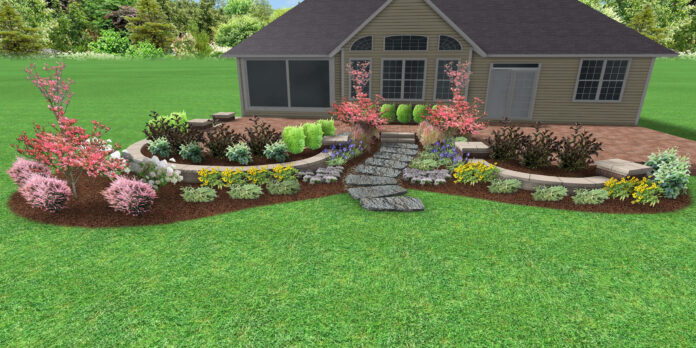Landscaping is now one way to combine science and art to create an aesthetically pleasing and functional look for your outdoor spaces. And landscape design refers to the tools and guidelines you use to establish a pleasant and inviting appearance. It could involve extending your indoor living spaces to the outside or designing designs that decorate the outside alone. Whichever way you decide, when done correctly, landscaping will effortlessly make your space more inviting than you could ever imagine.
And more importantly, if, for example, you click here for Windermere FL landscaping, you will come across landscaping designs that will perfectly complement your residential or commercial spaces. With these and more inspirations, your landscaping won’t be as it used to be before. But still, to benefit more from these designs, let’s find out the basic principles that make any landscape design a success.
Unity
In landscaping, unity is a principle that refers to repetition and consistency. Repetition is where you bring about unity in your designs by repeating elements. These elements include the plants you use and the décor fixtures that bring the appearance people wouldn’t help but love. On the other hand, consistency is where you create a combination of elements that perfectly complement and even change the appearance of a place, including your backyard, deck, or patio. This way, unity helps make a theme for the decoration of your space. It could be a theme of colors or a mixture of fixtures.
Harmony and Contrast
These elements work together to bring an appearance that is pleasing and inviting. For instance, contrast highlights particular elements while harmony helps those elements to make the space look unique. Contrasting is where you use different fixtures and even lighting to capture viewers’ attention and even draw them closer quickly. And harmony involves combining elements and trying those that work together and those that don’t. In the end, you take those that match and install them on a theme.
Transition
Transition in landscaping is when you change how a site looks. It involves a specific change of appearances known as gradual change. And this is when you change the looks of your space by changing fixture sizes and color intensity. It could also include changes in texture and shapes.
Lining
A landscaping line is simply an example of a pathway. Lines will help you create planting beds, entryways, and walkways. It also helps give guests an illusion of walking into more appealing spaces.
Proportion
Proportion is where the sizes of your landscaping elements relate to one another. With this, you want to plan the dimensions that will perfectly fit both sides of the landscapes and even ensure they have similar colors and sometimes textures to create an appearance hard to distinguish, especially if you have multiple landscapes decorating your space.
Repetition
Repetition is similar to unity but only differs in that you will be careful to avoid using many similar elements that might make the space dull and even unattractive. To correctly apply the repetition concept, use features with the same colors, texture, and even sizes to create impressions and expressions that are more inviting. But remember, avoid overusing color, and even similar elements guests will quickly notice.
Focal Point and Color
A landscaping focal point is when you establish a center of attraction. Like you install fixtures that make it easy for people to like your space immediately they step into your compound. It could be lighting or a combination of colors that work as the center of attraction for guests. For example, you can incorporate fire pits and lighting pots. You can also paint patios and decks to add a touch of style that turns heads.
Or, you could even install hot tubs and create water decorations that look like waterfalls to entice onlookers. On the other hand, the color gives your designs appearances that help people imagine real-life circumstances that make them love spaces. Some will take pictures; others will want to sit or play. This way, colors allow your guests to remember and keep memories about your place. For example, a mixture of green and blue colors helps create different perfectives of love and appreciation.
Balance
Landscaping balance is when you ensure equality on the elements you install. Equality also ensures both sides of a landscape complement the appearance you want. For example, symmetrical balance allows you to install fixtures on both sides of a landscape that mirror each other. This way, your landscapes will have sides that look identical to create inviting and aesthetically pleasing patterns.











